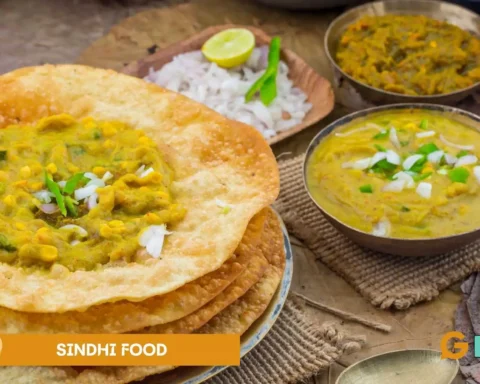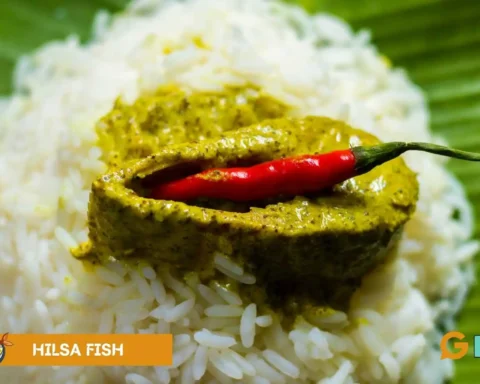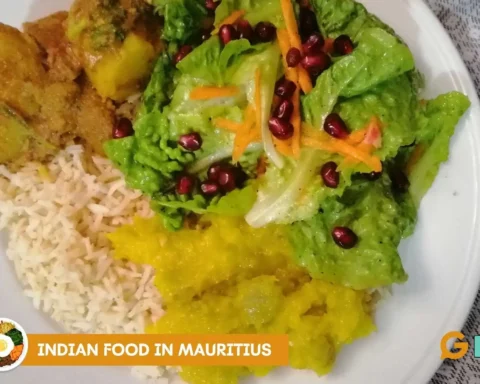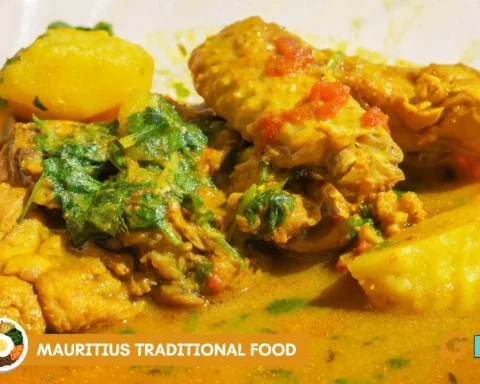Slovenia may be a small country, but its culinary scene punches far above its weight. From hearty stews to delicate pastries, refreshing craft beers, and strong wines, Slovenian food and drink offer a unique and satisfying experience for any traveller. Whether you’re a seasoned foodie or simply looking for a new taste adventure, this guide will whet your appetite and help you plan your delicious Slovenian journey.
Table of Contents
History of Slovenian Cuisine
Before the 18th century, Slovenian cuisine centred around basic sustenance, reflecting the lives of peasants and farmers. Cereals like wheat, buckwheat, and barley formed the foundation of the diet, while vegetables like cabbage, turnips, and beans provided essential nutrients. Meat, primarily pork and poultry, was a rare treat reserved for special occasions. This era saw the birth of iconic dishes like ajo, a hearty barley stew, and žganci, a porridge made from buckwheat or polenta.
As Slovenia’s borders shifted and interacted with different cultures throughout history, its cuisine absorbed a medley of influences. From Central Europe came hearty stews like goulash and Obara, while the Mediterranean introduced pasta dishes like fuži and fresh seafood specialities. The Austro-Hungarian Empire left its mark with pastries like kremšnita and potica, the iconic nut roll that became a symbol of Slovenian culinary heritage.
Each region of Slovenia developed its own culinary identity, utilizing local ingredients and traditions. The Alps nurtured a love for cheese, with varieties like kranjski sir and trniški sir gaining renown. The coast embraced the bounty of the Adriatic, perfecting dishes like brodet and pečena riba. Central Slovenia brought forth hearty soups like jota and comforting dumplings called žlikrofi. This regional diversity continues to be a cornerstone of Slovenian cuisine, with each bite offering a glimpse into the country’s rich history and cultural nuances.
The 19th and 20th centuries saw a shift in Slovenian cuisine. Like Valentin Vodnik’s pioneering work in 1798, cookbooks began codifying traditional recipes. Restaurants emerged, offering refined versions of peasant dishes alongside dishes inspired by international trends. After World War II, emphasis on local ingredients and sustainable practices led to a renewed appreciation for traditional foods. The classification of Slovenia as part of Eastern Europe can vary depending on historical, cultural, and geopolitical perspectives. While Slovenia has historical and cultural ties to both Central and Southeastern Europe, it is commonly classified as part of Central Europe in contemporary discussions.
In recent decades, Slovenian cuisine has flourished as a gastronomic region on the international scene. Chefs like Ana Roš of Hiša Franko have received global acclaim, blending tradition with modern techniques. Local wineries and breweries are producing internationally recognized wines and beers. Farmers’ markets and sustainable practices are gaining prominence. Today, Slovenian dishes celebrate its heritage while embracing innovation, offering food lovers a dynamic and delicious experience worldwide.
Best Slovenian Food
Slovenia’s compact size belies the incredible diversity of its culinary scene. From hearty alpine stews to delicate pastries drizzled with honey, Slovenian food culture offers an explosion of flavours that will tantalize your taste buds. So, whether you’re a seasoned foodie or a curious newcomer, prepare to embark on a delicious journey through these iconic dishes served at a Slovenian restaurant or home.
Kremšnita
This typical dish of custard pastry is the undisputed queen of Slovenian desserts. Imagine layers of flaky filo pastry encasing a luscious vanilla custard filling, dusted with a generous sprinkle of powdered sugar. Each bite is a textural contrast – the crisp pastry yielding to the smooth, creamy custard, creating an unforgettable symphony of flavour. Kremšnita is more than just a dessert; it’s a cultural symbol, often served at celebrations and enjoyed with a cup of strong coffee.
Gorenjski tepkovec, a renowned Slovenian potato dumpling with Protected Geographical Indication (PGI) status, is a culinary gem from the Gorenjska region. Hand-shaped from a blend of boiled potatoes, flour, eggs, and salt, its unique fluffiness is achieved through a traditional whipping technique with a unique wooden whisk known as a “tepk.” This dish encapsulates generations of culinary tradition, utilizing local ingredients and serving as a cultural symbol of Gorenjska. Enjoyed as a main course or side dish, Gorenjski tepkovec pairs perfectly with sauerkraut and bacon, offering a delicious taste of Slovenian heritage and a connection to the region’s rich history.
Žlikrofi
These delightful dumplings are like little pockets of joy, simmering in savoury broths or bursting with sweet fillings. Made with pasta dough and typically filled with potato, pork meat, or herbs, žlikrofi can be enjoyed as a main course or as a comforting side dish. In the Idrija region, a unique variety called Idrijski žlikrofi holds PDO status, meaning they’re made according to a strict traditional recipe and geographical origin. Try them with sage butter or a creamy mushroom sauce for a taste of Slovenian comfort food at its finest.
Kranjska Klobasa
This savoury sausage is a national treasure from the Kranjska Gora region. Made with a blend of pork, beef, caraway seeds, and spices, Kranjska Klobasa boasts a distinct smoky flavour thanks to its traditional production method – air-drying over beechwood smoke. Enjoy them grilled with sauerkraut and potatoes or sliced onto freshly baked bread for a hearty and satisfying meal.
Potica
This rolled yeast dough pastry is the quintessential Slovenian national dish, a testament to the country’s baking prowess. Available in sweet and savoury variations, potica comes with various fillings like walnuts, poppy seeds, honey, cottage cheese, Slovenian cheese, or even tarragon. Each region has its take on potica, making it a delightful way to experience Slovenia’s culinary diversity. Prekmurska potica, the traditional dish filled with walnuts, raisins, and spices, is a particularly beloved variety.
Jota
This hearty bean soup is a warm hug in a bowl, perfect for chilly Slovenian evenings. Made with a base of white beans, potatoes, sauerkraut, and various vegetables, jota is often enriched with bacon or sausage for added depth of flavour. It’s a simple yet satisfying dish, traditionally served with a dollop of sour cream and a slice of crusty bread.
Pogača
This type of bread roll comes in various shapes and sizes and is often enjoyed as a side dish or as part of a meal. It is a staple in Slovenian cuisine and can be found in different regional variations. There are several types of Pogača, ranging from simple to more elaborate versions. Some are plain, while others contain cheese, ham, or vegetables. It is often associated with special occasions and celebrations. It is commonly served at weddings, holidays, and other festive events. Pogača can be served as a standalone bread or as an accompaniment to various dishes. It pairs well with cured meats, cheeses, and other traditional Slovenian delicacies. Different regions of Slovenia may have their unique variations of Pogača, with slight differences in ingredients or preparation methods.
Bled Cream Cake Ice Cream
Ice cream, known as “sladoled” in Slovenian, is a popular treat that locals and visitors enjoy. In cities such as Ljubljana, Bled, and Maribor, you’ll find various ice cream parlours and shops offering diverse flavours and styles. Slovenian ice cream makers often incorporate seasonal and regional ingredients into their creations. You might find refreshing fruit sorbets made with locally grown berries, cherries, or peaches during the summer. Some shops may offer unique holiday-themed flavours or warming options like spiced gingerbread in winter.
Best Slovenian Drinks
Slovenia’s vibrant culinary scene extends beyond its delectable dishes to offer a refreshing tapestry of local beverages. From excellent wines to invigorating brews and heartwarming spirits, Slovenian drinks promise to tantalize your taste buds and leave you wanting more. So, whether you’re a seasoned connoisseur or simply curious, embark on a delicious journey through these popular Slovenian drinks:
Teran
This bold red Slovenian wine is the uncrowned king of the Primorska region, nestled along the Adriatic coast. Made from the indigenous teran grape, this full-bodied wine boasts an intense ruby colour and notes of black fruit, berries, and earth. The unique terroir, characterized by limestone-rich soil and Mediterranean sunshine, infuses teran with a distinct minerality and a touch of tannin. Pair this robust vino with grilled meats, aged cheeses, or hearty stews for an authentic taste of Slovenian culinary harmony.
Goriška Brda is a picturesque wine-growing region located in western Slovenia, near the border with Italy. The region is a prime wine-producing area known for its high-quality wines. The hilly terrain, favourable climate, and well-drained soil create optimal conditions for grape cultivation. Local winemakers use these factors to produce wines, including white and red varietals. Some of the wide varieties grown in Goriška Brda include Rebula, Sauvignon Blanc, Merlot, and Pinot Grigio.
Zlatorog
Raise a glass of this iconic lager and taste Slovenian brewing history. Zlatorog, meaning “golden horn,” originates from Laško, a town with a long-standing tradition of beer production. This classic pale lager is crisp and refreshing, with a subtle hop aroma and a smooth, balanced finish. Enjoy a zlatorog alongside traditional pub fare like sausages, goulash, or cheese platters for a quintessential Slovenian experience. This beloved brew is readily available in pubs and restaurants throughout the country.
Slivovka
This potent fruit brandy packs a punch, warming you from the inside out. Made from fermented plums, primarily in the Štajerska region, slivovka offers a taste of Slovenian orchard bounty. The clear spirit can range from delicate floral notes to a robust, smoky flavour, depending on the type of plums used and the distillation process. Sip Slivovka neat as a digestif after a hearty meal, or savour it on ice for a refreshing summer treat. Be warned, though, this one packs a punch, so enjoy it responsibly.
Cviček
This unique red wine hails from the hilly Karst region bordering Italy. Made from a blend of local grape varieties like refošk and Teran, cviček is lighter-bodied than its Primorska counterpart, offering a vibrant ruby colour and notes of cherries, raspberries, and herbs. Its characteristic sourness, known as “refošk sting,” adds a playful complexity to the flavour profile. Cviček pairs beautifully with cured meats, pasta dishes, and roasted vegetables. Seek out this regional gem in restaurants and wineries across the Karst region.
Mehkobanec
This refreshing pear cider is a summertime favourite, particularly in the Štajerska region, known for its fruit orchards. Made from fermented pear juice, traditionally using wild pears with a high sugar content, mehkobanec boasts a slightly sweet taste and a vibrant golden hue. Its low alcohol content and effervescent nature make it a perfect choice for a hot afternoon or a light accompaniment to summer fare. Find this fruity gem at local orchards, farmers’ markets, and some restaurants within the Štajerska region.
Orange Wine
Don’t let the name fool you; orange wine isn’t made from oranges! Instead, it’s a white wine made using white grapes but with a twist. Unlike traditional white wines, where the juice is immediately separated from the grape skins, orange wine allows the juice to macerate with the skins for an extended period, ranging from days to weeks. This skin contact infuses the wine with tannins, colour, and complex flavour notes, resulting in a wine ranging from pale orange to amber in colour and offering aromas of apricots, honey, nuts, and even tea leaves.
Conclusion: Slovenian Food and Drink
As we bid farewell to this gastronomic expedition, we encourage every traveller and food enthusiast to embrace Slovenia’s culinary treasures. Whether you find yourself in a quaint village inn or a bustling city restaurant, let the flavours of potica, jota, Istrian fuži, and Slovenian wines linger on your palate, creating memories that will last a lifetime. In global cuisine, Slovenia stands as a hidden gem, waiting to be discovered and savoured by those who appreciate the true essence of good food. Cheers to the delectable journey through Slovenian food and drink, creating memories that will last a lifetime.
FAQs
Does Slovenia have nightlife?
Slovenia has a vibrant nightlife scene, especially in cities like Ljubljana and coastal towns. Visitors can enjoy lively bars, clubs, and cultural events, making it a diverse and exciting destination after sunset.
What is not allowed in Slovenia?
In Slovenia, activities such as littering and smoking in enclosed public spaces are prohibited, and driving under the influence of alcohol or drugs is strictly forbidden and can result in severe penalties.
What is typical Slovenian street food?
Slovenian streets pulsate with Balkan classics like grilled sausages (“čevape”) and savoury pastries (“burek”), alongside hearty dumplings (“žlikrofi”) and decadent rolled pastries (“potica”).
Which Slovenia country has the best wine?
Slovenia has a rich winemaking tradition, but specific regions like Goriška Brda, Styria, and Podravje are renowned for producing some of the country’s best wines. Each region offers unique grape varieties and terroirs, contributing to the diversity and quality of Slovenian wines.









